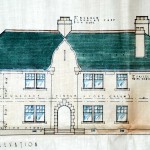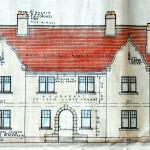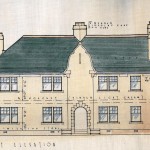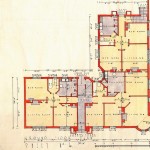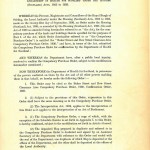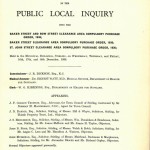The design of this housing represents a huge improvement on the accommodation that many Stirling citizens lived in prior to this. Although these buildings appear old fashioned to us now, at the time they would have been seen as profoundly new both in the way that they were designed and for the ‘modern conveniences’ that they offered their occupants.
Up to the 1930s, most ordinary people in Scotland lived in tenement buildings or stone cottages with earthen floors. Some of the most cramped dwellings were the notorious ‘single end’ flats where whole families lived, cooked and slept in one room with a range at one side and a recess for a fold down bed at the other. Slum clearance was taking place at the Top Of The Town in Stirling at this time and the Archives holds Compulsory Purchase Orders for Baker Street, Bow Street and St John Street where people were being moved out of properties that had been condemned before these buildings were demolished.
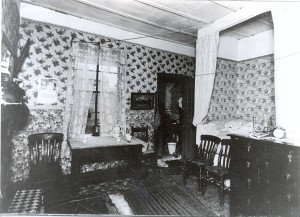
Many of those people were re-housed in The Raploch. There was some opposition to this at the time and a Public Inquiry was held into the clearances but many were also happy to be given new houses with proper, modern plumbing. The plans of the flats give good detail of how each room was to be used making it easy to visualise what life was like within them when they were first built. Although they have been much altered, the buildings are still occupied and many are now privately owned.
These flats with their separate bedrooms, kitchens and living rooms and inside loos and baths were a huge improvement on what could previously have been rented and shows the local authority as an innovator in social housing.
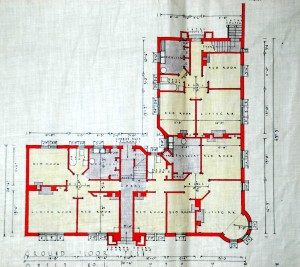
The flats were designed by Captain Eric Sinclair Bell and are a variation on the Scottish Baronial style of architecture given the title ‘Scotstyle’. Bell was born in 1884 at Warrington in Lancashire. He studied at the Glasgow School of Art and opened an architectural practice in Stirling after the First World War. He acted as Architect to the Stirling Thistle Property Trust and assisted in the restoration of their buildings at the Top Of The Town in Stirling. He became the first President of the Stirling Society of Architects and Trustee of the Stirling Smith Museum and Art Gallery. Eric Bell also designed the Muir Hall in Doune in 1921/2, the Boys’ Club conversion on St John Street, Stirling in 1929 and the Prayer Chapel at Kippen Parish Church in 1938.
